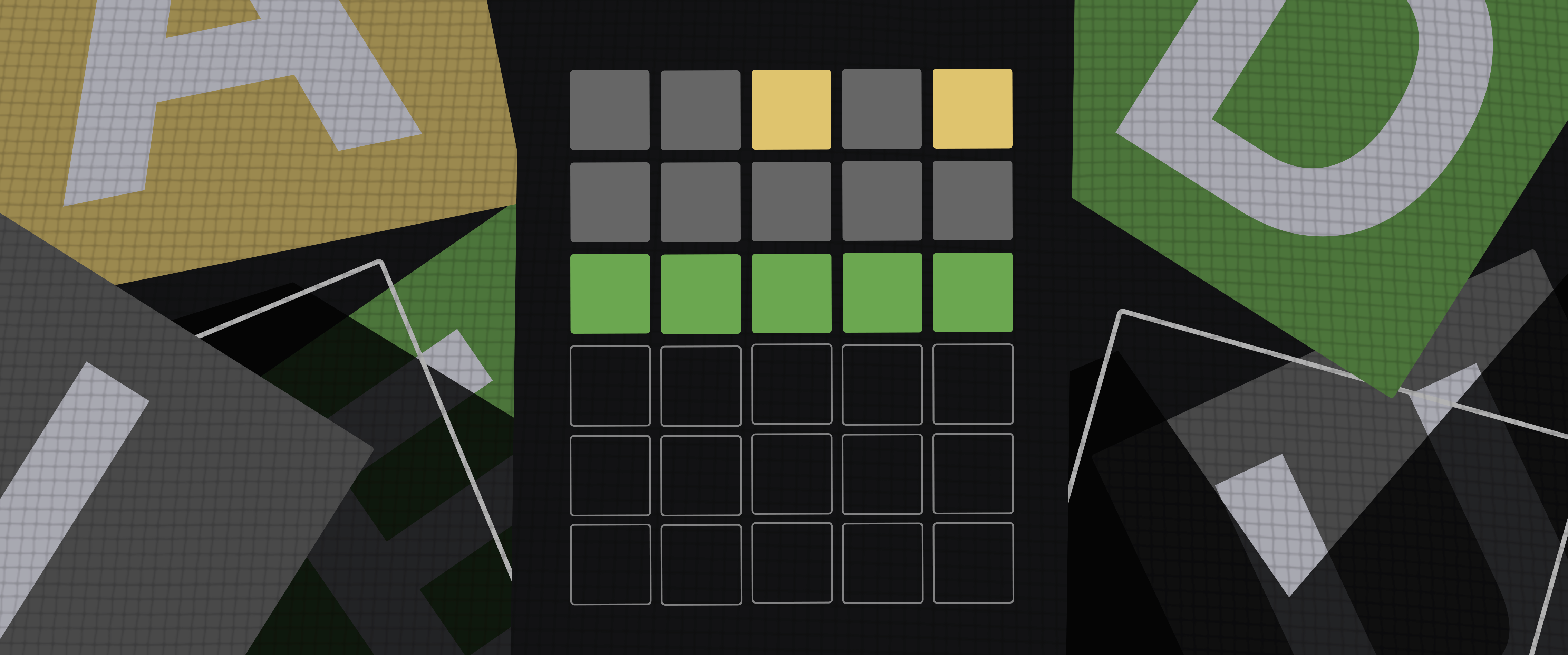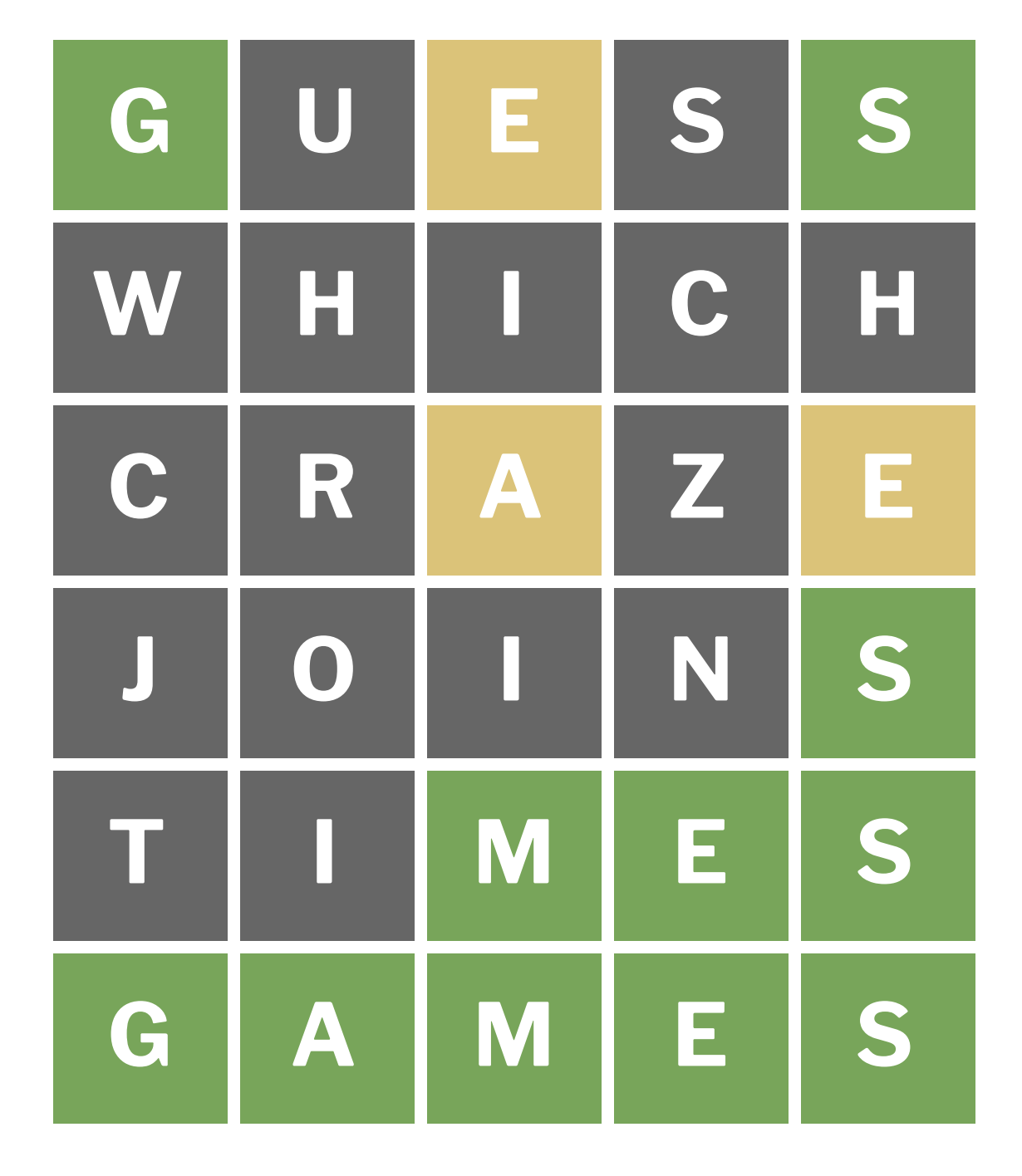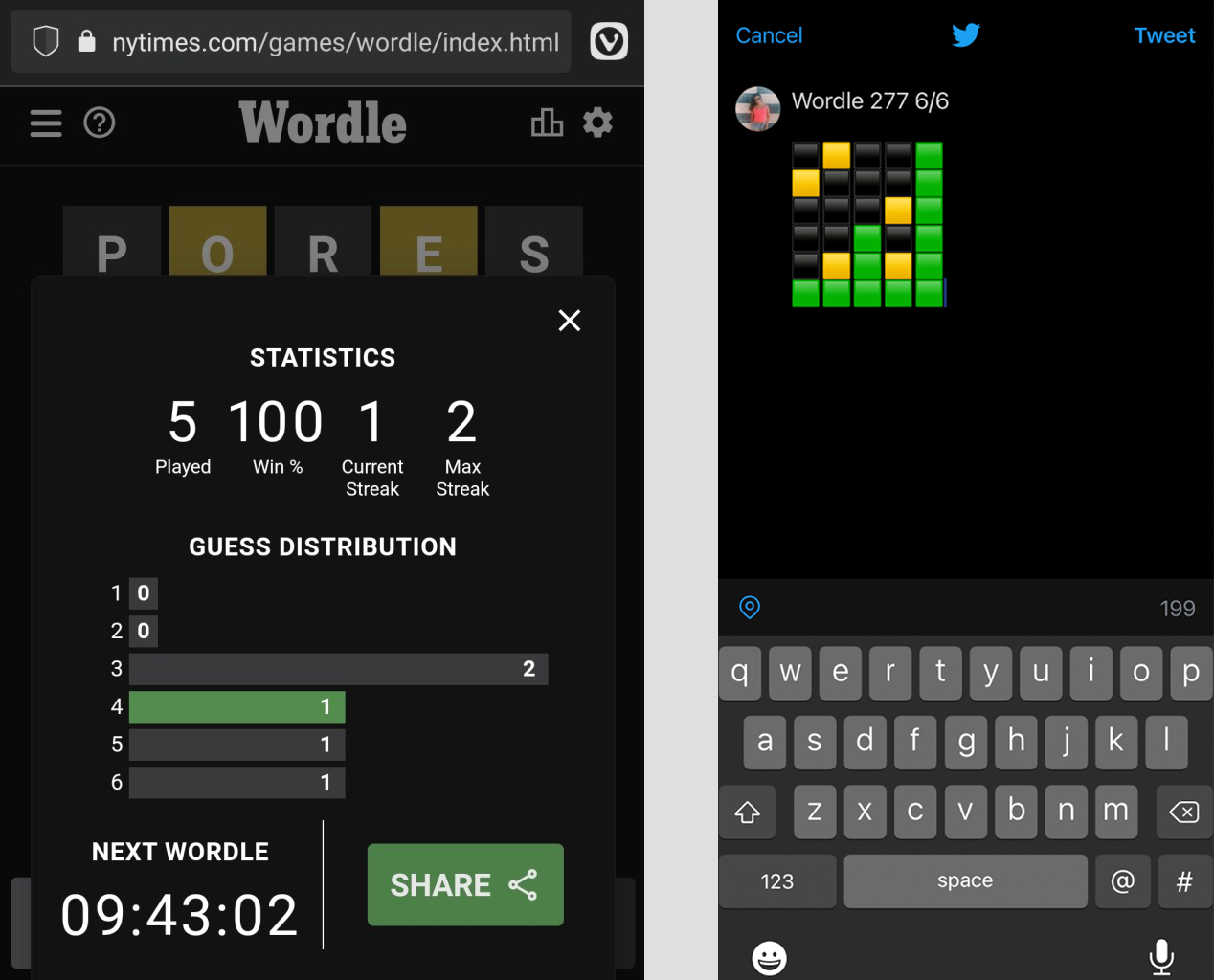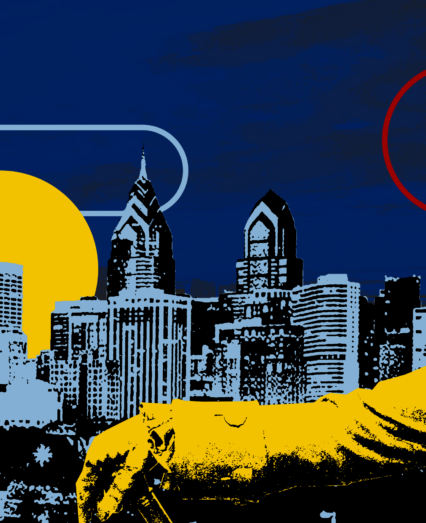By now, you’ve probably seen the rows of green and yellow squares all over your social media feed. If you didn’t already know, these squares are from the popular online word game Wordle.
The basic premise of the game is to figure out what the daily five-letter word is in six tries or less. The rows of colorful squares are more than just a fun pattern — they represent how a person guessed for each letter. A green square means that the letter is in the word and the correct place in the word. A yellow square means that the letter is in the word, but not in the right spot. Finally, the gray square (which is the saddest of all the squares) means that the letter is not in the word.
Screenshot via New York Times
So what’s the story behind this simple word game that’s sweeping across the internet?
It all started in Brooklyn with a software engineer named Josh Wardle. His partner was a long-time fan of word games, so naturally, Josh decided to create a word game. This is where Wordle was born.
In the beginning, Josh and his partner were the only ones who played. Then as the word game gained steam in Josh’s family group chat, he decided to release it to the public in October 2021.
Wordle was definitely not an overnight success — only 90 people played the game on November 1, 2021, shortly after he released it to the public. It took almost two months for the game to see 300,000 people playing it, and even longer until the New York Times acquired it.
Who else is playing #Wordle? Addicted. pic.twitter.com/HJ7pt7WLmn
— Jimmy Fallon (@jimmyfallon) January 4, 2022
So how did the game go from zero to one hundred in a matter of months?
One of the biggest factors in Wordle’s success is its shareability. At the end of every daily puzzle you complete, an option to share your score pops up. This feature allows users to post their scores on Facebook, Twitter, or any social platform in a series of spoiler-free emojis, creating an instant buzz around the game. In the early days of Wordle, everyone on social media wanted to know what the green and yellow squares meant.
Since the word changes every day, Wordle gives people something to look forward to and creates a sense of competition. As everyone tries to guess the same word, a subtle rivalry sparks between players. Everyone wants to guess the daily word in the fewest amount of tries so they can show off their score. My family and I love to brag to each other in our group chat about how low our Wordle score was for the day.
Why is it so popular?
The game’s success also comes from the fact that it’s free and gives people something to look forward to each day. You don’t need an app or a New York Times subscription to play the game — it’s free for everyone. Anyone can take part in the fun and the challenge of the game.
I was legit about to hurl this phone to the NYT building when I thought they were about to rerun a word from 2 weeks ago….whoever is setting these words is a maniacal genius
Wordle 277 4/6
⬛⬛⬛🟨⬛
⬛⬛⬛🟨🟨
🟨🟨🟨🟨⬛
🟩🟩🟩🟩🟩— ?st (@questlove) March 23, 2022
According to psychologist Lee Chambers, Wordle helps to satisfy the logic-and-language area of our brains. Once we play the game, dopamine—a hormone in our bodies that gives us the feeling of pleasure—is released.
Psychology professor Douglas Gentile says that Wordle helps to fill some of our basic human needs, like autonomy, belongingness, and competence. When we play, we feel like we have control over our lives and we are connected to other people when we share our scores.
Wordle isn’t the first game to go through a phase where everyone on the internet is talking about it—Candy Crush and Angry Birds also had their 15 minutes of fame. However, I think what sets Wordle apart from the rest is that it’s free to play and it’s an inherently social game. Wordle allows you to challenge your friends and share scores with them.
Wordle’s grip on the internet hasn’t subsided yet. Spinoffs of the game are already being created, such as Quordle, a game in which players try to solve four Wordle games at once, and Worldle, a similar game in which users guess a country by its shape. Wordle may eventually fizzle out at some point, but for now, I hope you all reach the golden score of 1 out of 6.





